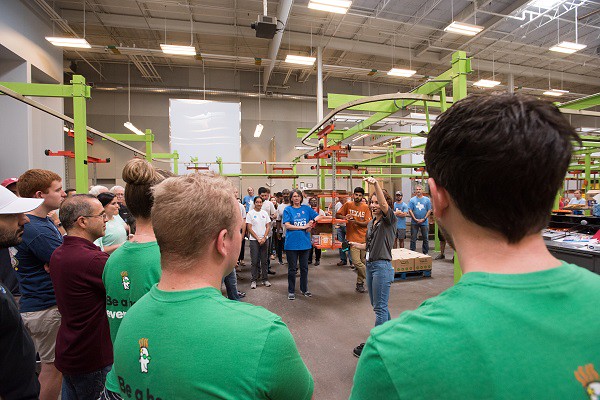
Hurricanes Harvey, Irma and Maria – each Category 4 – all made landfall in less than a month between August and September 2017. It will be hard to ever forget these historic disasters and the toll they took on millions of American families. In recognition of the federal government’s Hurricane Disaster Preparedness Week (May 6-12), we want to assure the nation that USDA is ready to provide vital nutrition assistance to families in need when disasters strike.
In the wake of catastrophic hurricanes like the ones faced last year, and other natural disasters, food is often one of the most immediate needs. Grocery stores may be closed or destroyed, and food previously purchased by families is suddenly ruined or unavailable. To overcome these barriers, USDA leverages America’s agricultural abundance to get food to people in times of great need. We work with our state, local and national partners to:
- Provide food for shelters and other mass feeding sites,
- Distribute food packages directly to households in need, and
- Partner with states seeking to run Disaster Supplemental Nutrition Assistance Program (D-SNAP)
USDA helps as local shelters and mobile feeding sites get food to those in need in the immediate aftermath of a disaster. Hot meals help provide nutrition and comfort as local communities get their bearings. Once clean-up has started, and roads are restored and grocery stores start to reopen, USDA can help through Disaster SNAP – helping families replace the food they lost during the storm.
This type of response doesn’t fall into place overnight. The work begins long before any major disaster occurs. Year round, and especially as hurricane season approaches, USDA works with its state and federal partners to ensure we are all prepared to respond to the nutrition assistance needs of everyone in need following a major disaster.
FNS conducts trainings with our state partners in hurricane-prone areas and includes recent lessons learned, new guidance and best practices that have been issued, and details on what to include in their disaster feeding plans. When a large disaster is expected to impact our nation, FNS gathers inventories of USDA Foods stored at federal, state, local, and school warehouses that can later be provided to organizations such as The Salvation Army and American Red Cross, the “boots on the ground” who prepare and serve meals to those at shelters and mass feeding sites. FNS maintains good working relationships with federal partners, like the Federal Emergency Management Agency (FEMA), first responders at the federal level who often reach out to USDA to supplement their disaster feeding efforts.
FNS trains and organizes a cadre of national and regional office staff to participate in exercises and activations of FEMA’s National and Regional Response Coordination Centers and Joint Field Offices. To learn more about our broader role and FNS’ response to the 2017 hurricanes, please see a summary highlighting these efforts (PDF, 1 MB).
The 2017 Atlantic hurricane season was among the top 10 most active on record, with each storm presenting its own unique threats and challenges. We don’t know what the future has in store for this season and those that follow, but when the time does come, USDA will continue to be there for America’s children and families.
To ensure you and your family are well-prepared before and during disaster situations, look to local response organizations and agencies as well as FEMA and the Center for Disease Control and Prevention (CDC), and ready.gov for the latest updates.
